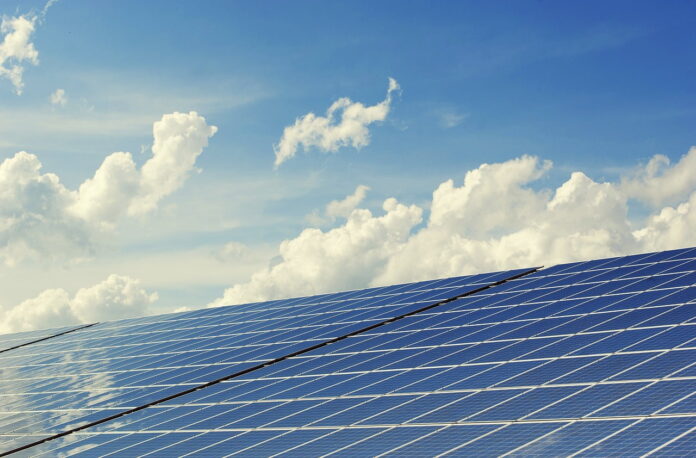The agricultural sector stands at a crossroads of energy consumption and environmental stewardship. As the world grapples with climate change and the need for sustainable practices, clean energy technologies are becoming increasingly vital in agriculture. These technologies not only reduce the carbon footprint of farming activities but also offer cost savings and energy independence to farmers. By integrating renewable energy sources such as solar, wind, biomass, and geothermal power, the agricultural industry can move towards a more sustainable and efficient future.
The transition to clean energy in agriculture is driven by the need to mitigate the impacts of traditional energy sources on the environment, including greenhouse gas emissions and pollution. Renewable energy solutions offer a pathway to reduce these impacts while ensuring that the growing global demand for food is met. Moreover, the adoption of clean energy technologies can enhance the resilience of agricultural systems against the volatility of fossil fuel prices and the uncertainties of climate change.
Solar Power Solutions: Harnessing the Sun for Agricultural Efficiency
Solar power has emerged as a leading clean energy solution for the agricultural sector. The versatility of solar technologies allows for a wide range of applications, from powering irrigation systems to electrifying remote farm operations. Photovoltaic (PV) panels can be installed on farm buildings or unused land, converting sunlight directly into electricity. This electricity can be used to run farm equipment, cool storage facilities, and even power electric fences and livestock water pumps.
The benefits of solar power in agriculture are manifold. Solar installations can significantly reduce energy bills, and with the decreasing cost of PV technology, the return on investment has become increasingly attractive. Additionally, solar power is a reliable energy source that can provide consistent electricity even in remote locations. Government incentives and grants for solar installations further sweeten the deal for farmers looking to adopt this clean energy technology.
Wind Energy on Farms: Generating Power in Rural Landscapes
Wind energy is another renewable resource that has found a place in the agricultural landscape. Farms often occupy expansive tracts of land with favorable conditions for wind power generation. By erecting wind turbines, farmers can harness the power of the wind to generate electricity for their operations. This not only provides a sustainable energy source but also creates an additional revenue stream, as excess power can be sold back to the grid in many regions.
The implementation of wind energy on farms can vary from small-scale turbines powering a single operation to large wind farms that contribute significantly to the local energy supply. Wind energy can be particularly beneficial in areas with strong and consistent wind patterns. Moreover, wind turbines have a relatively small footprint on the ground, allowing farmers to continue using the land for agriculture while the turbines operate overhead.
Biomass Energy Systems: Turning Agricultural Waste into Renewable Fuel
Biomass energy systems offer a unique opportunity to turn agricultural waste into a valuable resource. Crop residues, manure, and other organic waste materials can be converted into bioenergy through processes such as anaerobic digestion, combustion, and gasification. This not only provides a renewable source of energy but also helps manage waste products that would otherwise contribute to pollution and greenhouse gas emissions.
Anaerobic digesters, for example, can break down organic waste to produce biogas, which can be used for heating, electricity generation, or as a vehicle fuel. The byproduct of this process, digestate, can be used as a nutrient-rich fertilizer, closing the loop in a sustainable cycle of waste-to-energy conversion. Biomass energy systems can significantly reduce reliance on fossil fuels and create a more circular economy within agriculture.
Geothermal Applications in Agriculture: A Steady Source of Green Energy
Geothermal energy is a less common but highly effective form of clean energy in agriculture. It utilizes the heat from the earth’s core to generate electricity or provide direct heating and cooling solutions. In agriculture, geothermal energy can be used for a variety of applications, including heating greenhouses, drying crops, and providing warm water for fish farming.
One of the main advantages of geothermal energy is its consistency. Unlike solar and wind power, which are dependent on weather conditions, geothermal energy provides a steady and reliable source of heat. This can be particularly valuable in regions with cold climates, where maintaining optimal temperatures is crucial for agricultural productivity. Although the upfront costs of geothermal systems can be high, the long-term savings and environmental benefits make it an attractive option for sustainable farming.
The Future of Farming: Innovations and Trends in Agricultural Clean Energy Technologies
The future of farming is inextricably linked to the advancement of clean energy technologies. Innovations in energy storage, smart grid technology, and energy efficiency are set to further revolutionize the agricultural sector. For instance, advancements in battery storage can help overcome the intermittency issues of solar and wind power, ensuring a stable energy supply even during periods of low production.
Emerging trends also include the integration of precision agriculture with renewable energy systems, optimizing resource use and reducing waste. The use of drones, sensors, and data analytics can help farmers make informed decisions about energy consumption and crop management. Additionally, the development of new bioenergy crops and improvements in conversion technologies promise to expand the potential of biomass energy in agriculture.
As the world moves towards a more sustainable future, the role of clean energy technologies in agriculture will continue to grow. By embracing these innovations, farmers can not only contribute to environmental conservation but also improve their profitability and resilience in the face of a changing climate. The agricultural sector has the potential to be at the forefront of the clean energy revolution, leading the way towards a more sustainable and food-secure world.
